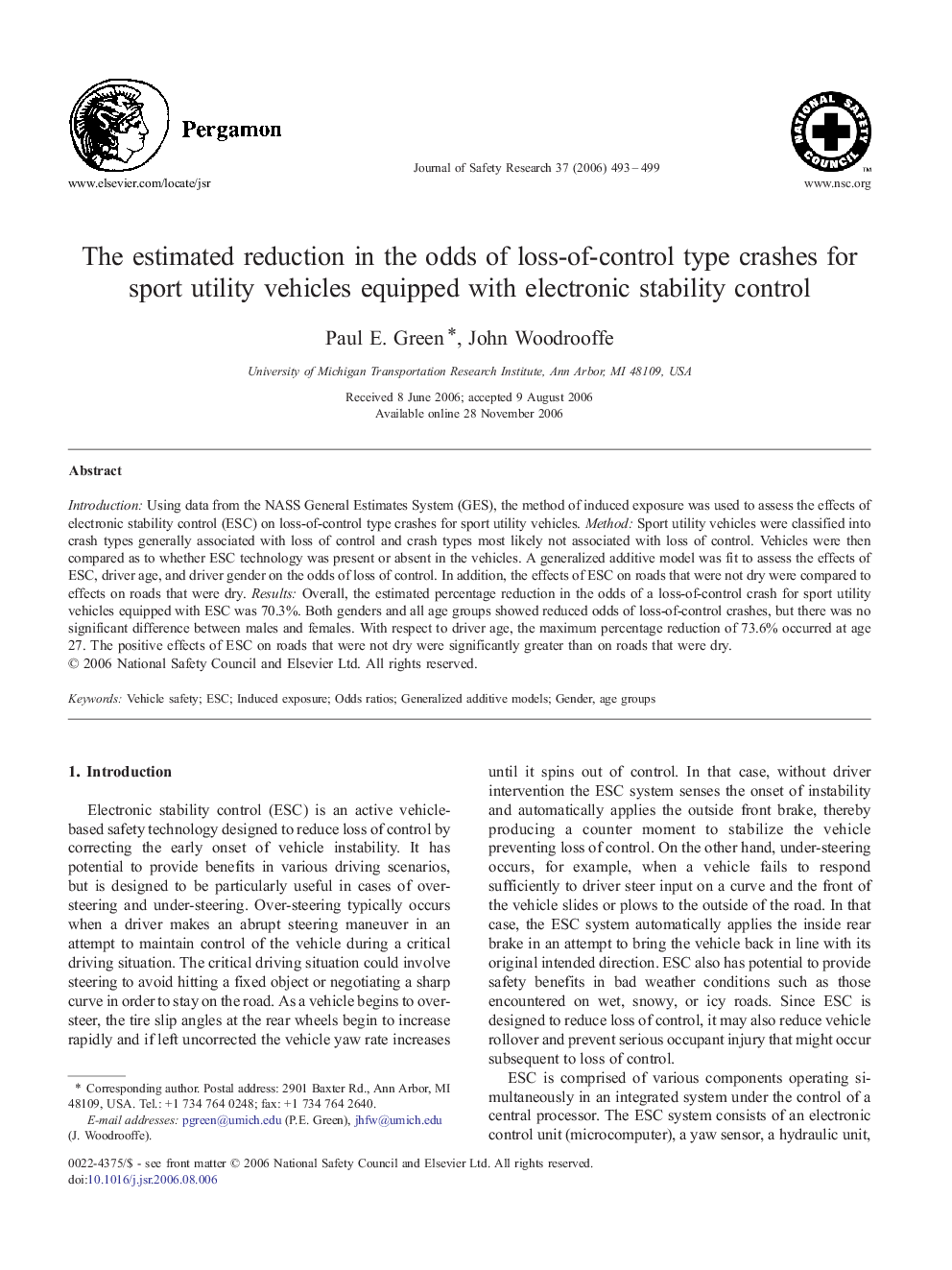| Article ID | Journal | Published Year | Pages | File Type |
|---|---|---|---|---|
| 588021 | Journal of Safety Research | 2006 | 7 Pages |
IntroductionUsing data from the NASS General Estimates System (GES), the method of induced exposure was used to assess the effects of electronic stability control (ESC) on loss-of-control type crashes for sport utility vehicles.MethodSport utility vehicles were classified into crash types generally associated with loss of control and crash types most likely not associated with loss of control. Vehicles were then compared as to whether ESC technology was present or absent in the vehicles. A generalized additive model was fit to assess the effects of ESC, driver age, and driver gender on the odds of loss of control. In addition, the effects of ESC on roads that were not dry were compared to effects on roads that were dry.ResultsOverall, the estimated percentage reduction in the odds of a loss-of-control crash for sport utility vehicles equipped with ESC was 70.3%. Both genders and all age groups showed reduced odds of loss-of-control crashes, but there was no significant difference between males and females. With respect to driver age, the maximum percentage reduction of 73.6% occurred at age 27. The positive effects of ESC on roads that were not dry were significantly greater than on roads that were dry.
